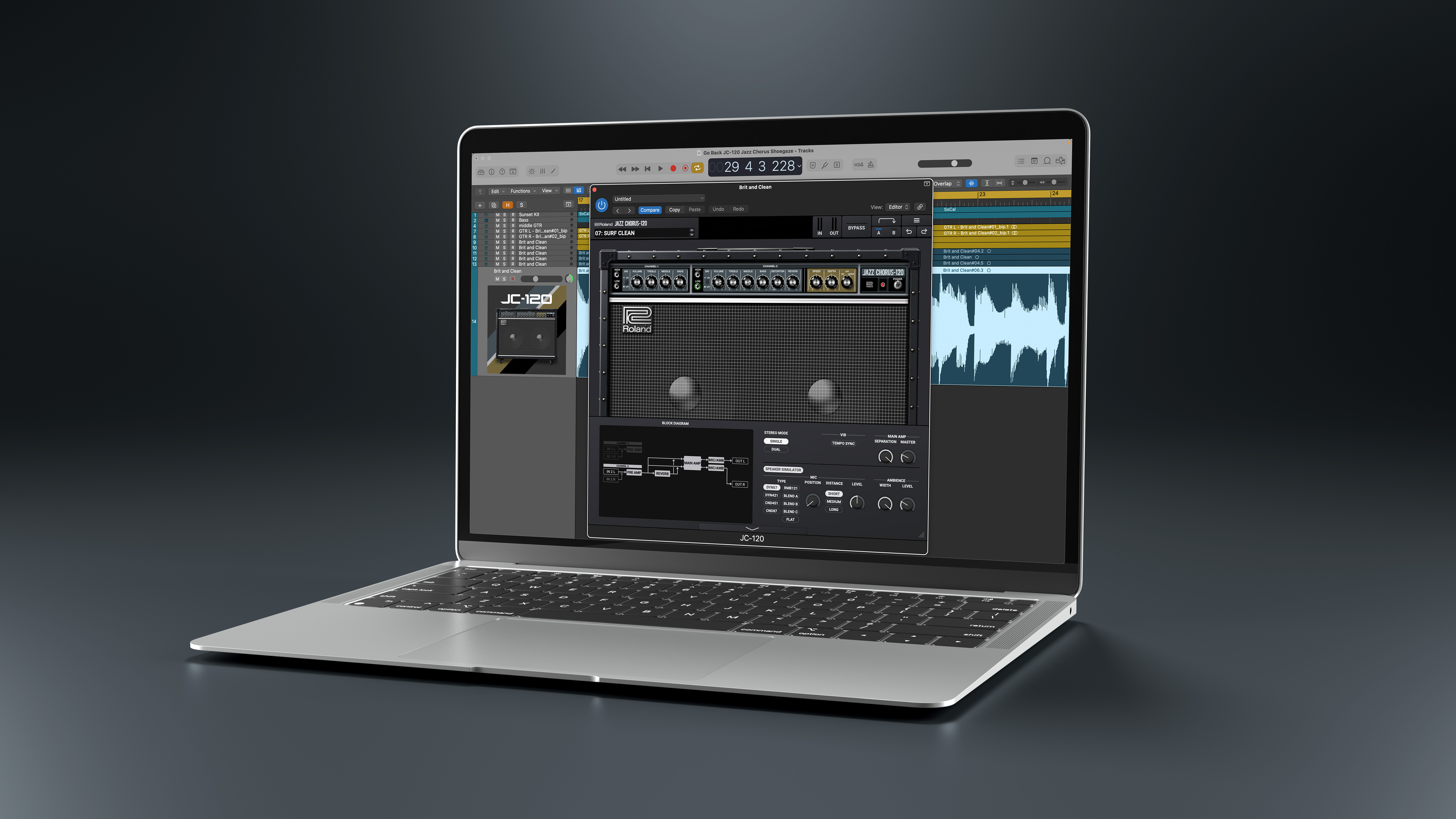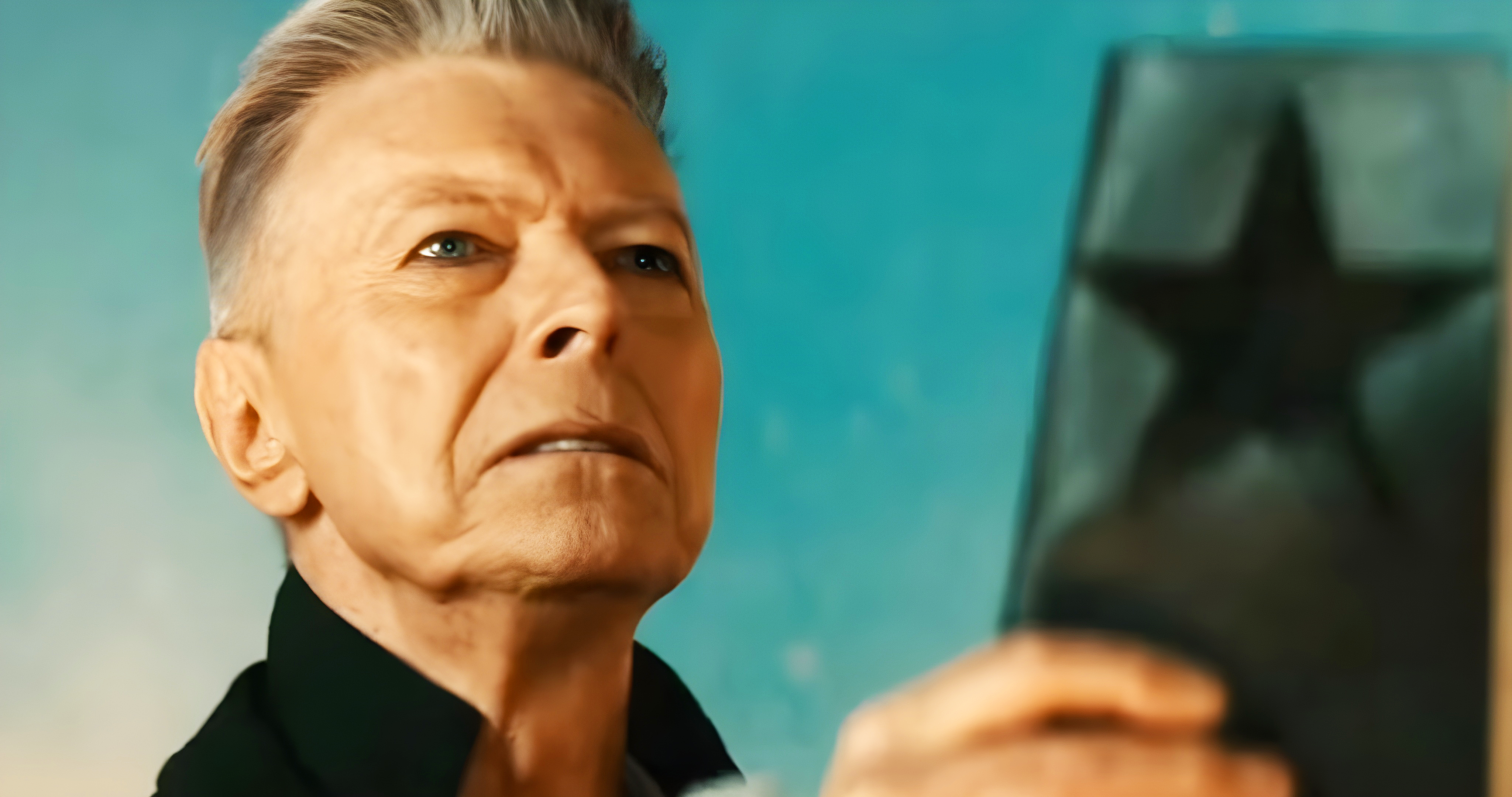Digital pianos FAQ: we answer your burning questions surrounding the confusing world of digital pianos
Got a few lingering questions that need to be answered before you take the plunge on a new piano? We’re here to help with straightforward responses to common digital piano queries
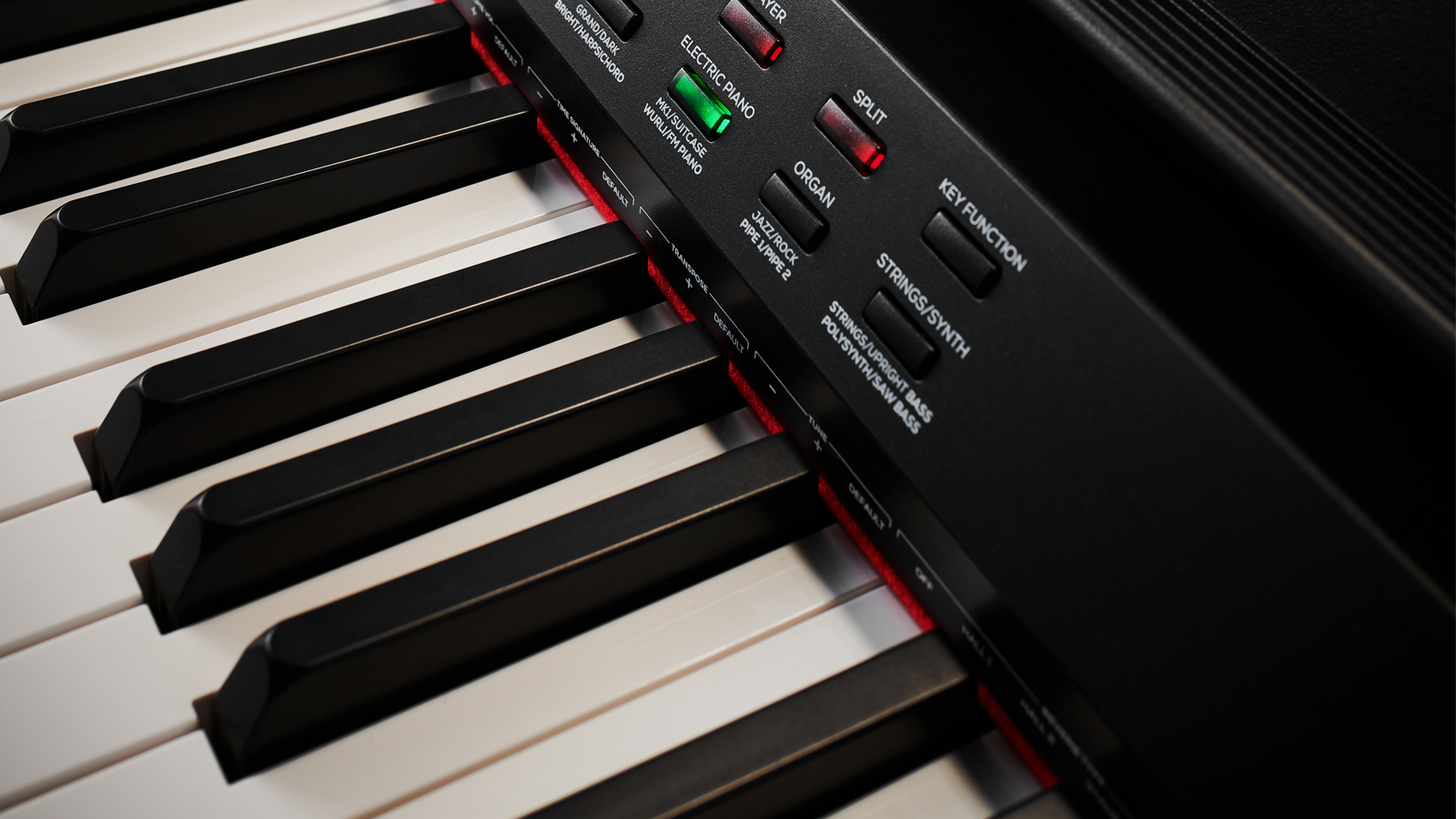
Buying a digital piano is a big purchase - arguably one of the biggest some of us will make. Therefore it's only natural to want all your questions answered before you feel comfortable dropping your cash on this expensive instrument. However, if you've been looking around the internet at manufacturer's websites, forums or just plain Google, then you'll have noticed that some of the information you seek isn't that readily available.
Well, don't worry, we've pulled together some of the most common questions being asked online and in music shops worldwide, and we've done our best to answer them as succinctly as possible - meaning you can just focus on playing the piano.
We have responded to common queries surrounding areas such as weight, tuning, functionality and even brands. So if you have a question relating to this digital instrument, then chances are we'll answer it here.
What is a digital piano?
As the name suggests, a digital piano is an electronic replication of an acoustic piano. Where a standard piano uses strings to produce its tone, a digital piano uses clever electronics to mimic the sound.
Unlike a keyboard, a digital piano tends to also replicate the feel and look of an acoustic piano as well, utilising weighted keys, built-in speakers and piano styling.
How many keys does a digital piano have?
As digital pianos are focused on emulating the acoustic variety, they will typically have 88 keys. However, smaller options are also available, with 76, 73 and 61 versions out there.
Do digital pianos feel like real pianos?
In short, yes. Modern digital pianos are surprisingly close to their older fashioned counterparts, with many brands dedicating a lot of money and resources to finding new ways to fully emulate the nuances found in an acoustic piano.
Get the MusicRadar Newsletter
Want all the hottest music and gear news, reviews, deals, features and more, direct to your inbox? Sign up here.
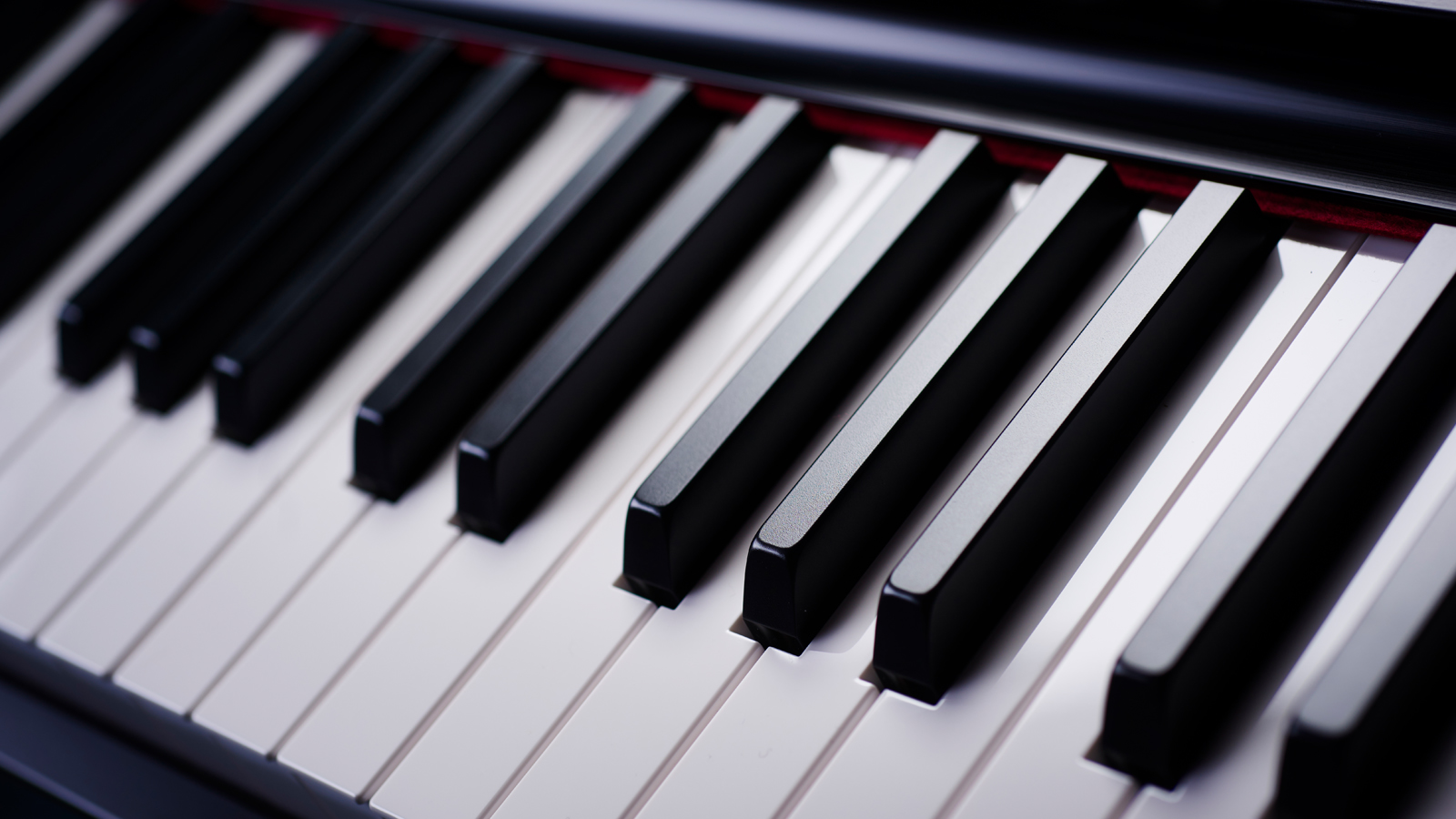
What are weighted keys?
All of today’s digital pianos will come with some form of weighted keys. This is designed to feel just like their acoustic brethren, simulating the resistance you’d experience on these instruments. It’s worth noting that there are different grades of weighting between different brands and even models. So it’s worth doing a little research to see which is right for you.
Do digital pianos come in different styles?
There are four main categories of digital piano - grand, upright, slim line and stage. Each of these options brings something different to the table, from size and portability to the number of sounds on board and even the type of key action used.
The Grand piano is, of course, the largest of the four, while the upright looks and feels just like a traditional upright piano. The slim line option is perfect for those who are tight on space and a stage piano is designed to be portable for use in rehearsal spaces and at concerts.
Are digital pianos heavy?
While a digital piano may not have the internal gubbins of the acoustic variety, they are still fairly heavy. You won’t necessarily need a professional piano mover, as two people can typically lift them. However, you should still proceed with caution while lifting a digital piano to avoid damaging yourself or your instrument.
Stage pianos, on the other hand, are very easy to move around and are no heavier than a solid keyboard.
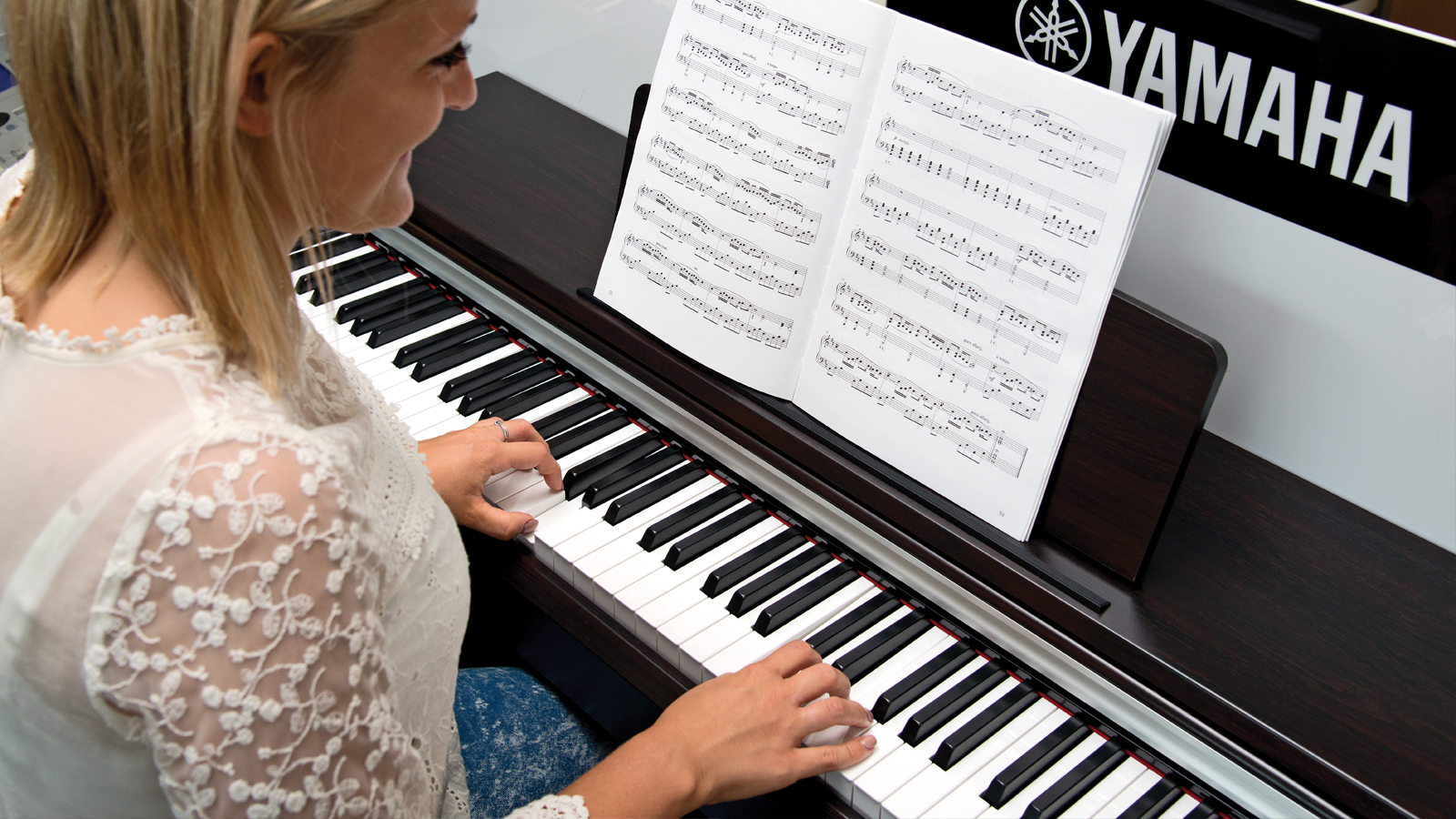
How much does a digital piano cost?
Like most instruments, the prices of pianos vary wildly. Some of the best digital pianos for beginners range from as little as £200 to £1,000, with more intermediate options reaching as much as £4,000. High end digital pianos - such as grand pianos - can reach dizzying heights and set you back as much as £10,000.
Does a digital piano need tuning?
No, unlike a traditional acoustic piano which has strings, a digital piano does not need to be tuned. That said, you can alter the tuning of your digital instrument by using the transpose button if you’d like to diverge from the standard concert pitch.
Are digital pianos easy to set up?
Yes, setting up a digital piano is a relatively straightforward process. The majority of digital pianos will arrive flat-packed in one box and will require assembling at home. Although this sounds daunting, in reality, they are quite easy to build. Much like assembling flat-packed furniture, as long as you follow the instructions carefully, it will be fine - and it should take no more than 30 minutes to put together your new instrument.
Be sure to check out our guide to setting up a digital piano at home for more tricks and tips to make the entire process more streamlined.
Do digital pianos need servicing?
Digital pianos don't require the same servicing as an acoustic piano. As there aren't strings inside that need tuning or replacing over time, a digital piano doesn't require regular maintenance.
That said, like any electronic instrument, such as synthesizers, keyboards and guitar amplifiers, a digital piano can break down and require fixing. However, there are dedicated engineers that can fix an array of problems found on digital pianos, from faulty keys to malfunctioning sound chips, and many of the top manufacturers offer rather generous warranties with their instruments.
It's worth noting that while there isn't much that can go wrong with a digital piano, it's still worth taking care of your new instrument as best as you can. Regular polishing and cleaning will ensure dust won't build up and get into the keys and electronics.
Also, while a digital piano isn't affected by heat and humidity in the same way as a regular piano, it's still essential to avoid excessively warm or humid spaces.
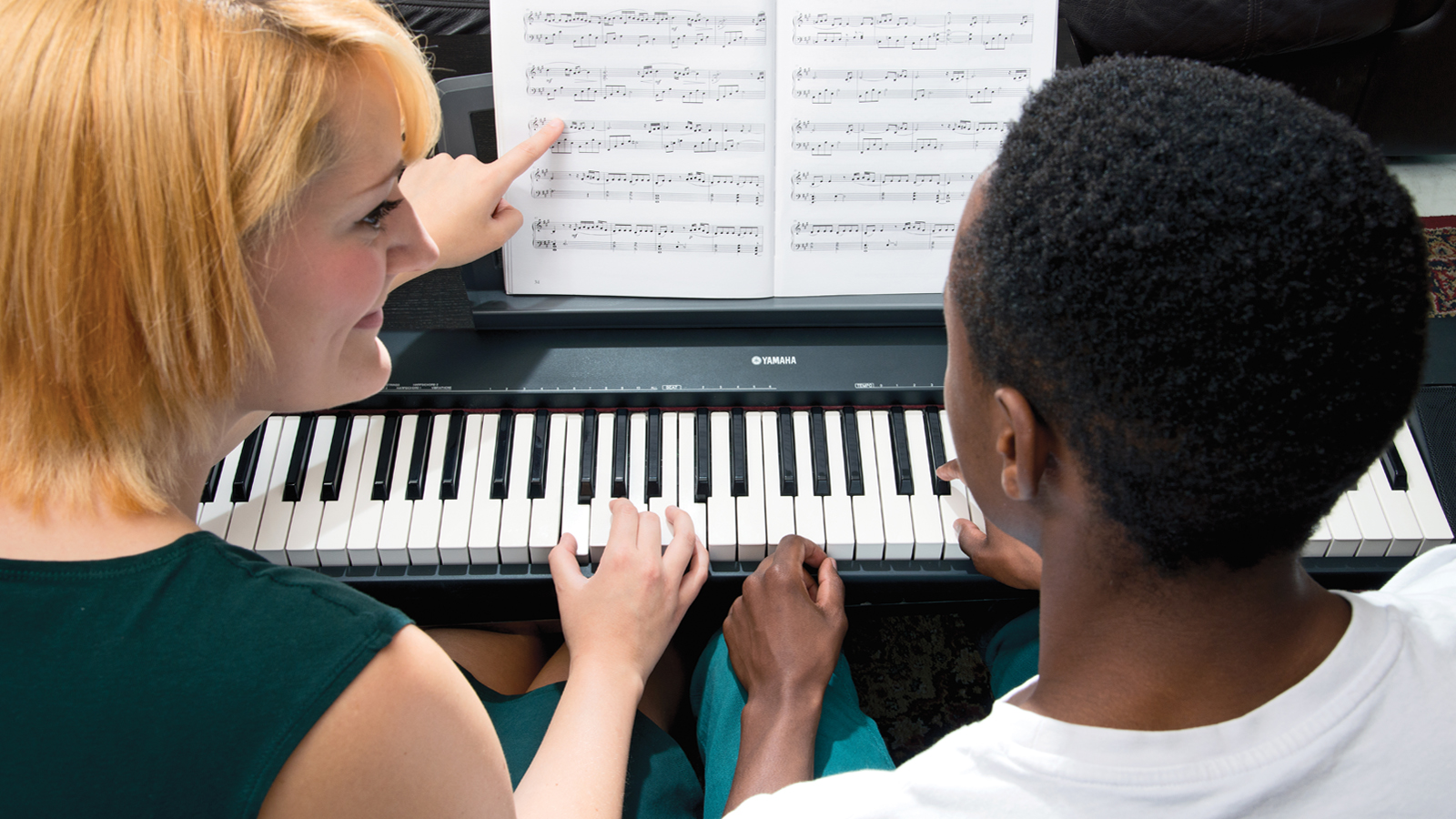
Does a digital piano have pedals like a regular piano?
Yes, in most cases, a digital piano will come with the three pedals typically found on an acoustic piano.
From left to right, the function of the pedals is as follows; the una corda pedal changes the sound of the instrument, making notes appear softer and more mellow. The sostenuto pedal allows you to choose which notes to sustain while allowing others to remain staccato. Lastly, the sustain pedal will enable you to elongate all the notes or chords at the same time, and is the most commonly used pedal of the three.
In stage pianos or instruments with only one pedal, you'll find it will perform the sustain function.
What is a hybrid digital piano?
A hybrid piano is an instrument that bridges the gap between an acoustic and digital piano. Typically it’s a digital piano that contains some of the mechanisms found in a traditional piano such as a real hammer key action. Common examples of a hybrid digital piano are the Casio GP-310, Yamaha NU1X and Kawai Novus NV10S.
Are digital pianos easy to use?
The truth is, digital pianos are far simpler to use than some people think - they are certainly less complicated than arranger keyboards with their countless buttons and switches. To start playing - with a basic grand piano sound - all you have to do is turn it on. If you want to change the voice, add a metronome or layer sounds, then you’ll have to use the onboard controls. In our experience, these buttons are usually very well labelled and pretty intuitive, so you should be able to dial in your desired setting very quickly.
How long does a digital piano last?
A well looked after digital piano will last you as long as you’d ever need it to, with most pianos not experiencing any problems over their lifetime. That said, the technology in this space is advancing at an alarming rate, with refinements in key actions, voices and speakers coming out all the time.
So if you want to keep up with the latest technology, you may want to consider upgrading your digital piano every ten years or so, although we don’t believe you have to.
What is escapement on a digital piano?
Escapement is a carry-over from acoustic pianos and is the mechanism that allows the hammer to fall away from the string after the key is pressed. Without escapement, the hammer would stay pressed against the string, dramatically affecting the sound.
On acoustic pianos, you can actually feel the escapement mechanism when you press a key, and even though it is not needed on digital pianos - there are no hammers after all - it’s an integral part of what a piano feels like to play, there for digital pianos will try and mimic this feeling.
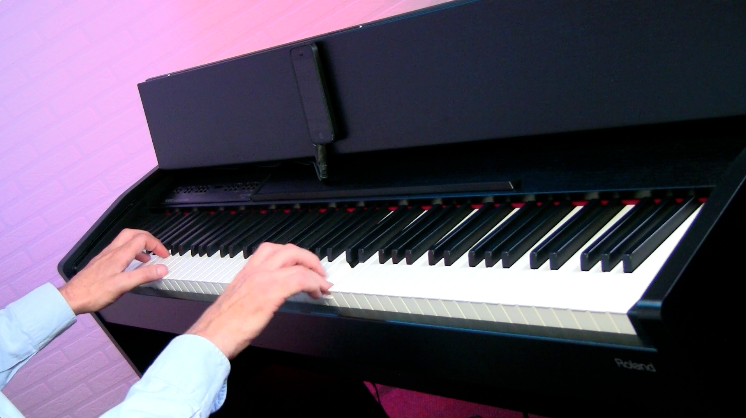
What is digital piano polyphony?
Very basically, the polyphony of a digital piano refers to the maximum number of notes that you can play at once before the sound engine stops generating new notes. It’s common to see pianos with a polyphony of 256, so it’s not something you need to be concerned about.
Can you use a digital piano as a MIDI controller?
Yes! Most modern digital pianos allow you to plug directly into your computer via USB, or even into your audio interface with a MIDI cable. This is a handy feature if you want to take advantage of the slew of piano VSTs available.
Which is the best digital piano brand?
The answer to this question is purely subjective. Every brand offers its own unique voice, feel and style. That said there are a few heavy hitters that you should check out if you are in the market for a quality digital piano. Yamaha, Roland, Casio, Korg and Kawai are among the best digital piano brands for us and they make some of the finest instruments in the world.
Why are digital pianos so expensive?
Yes, digital pianos aren’t cheap, but they are considerably less expensive than acoustic pianos - not to mention the barrier to entry is far less, with a beginner pianist being able to pick up a budget stage piano for around £200 - £300.
When it comes to high-end digital pianos, you are paying for an impeccable instrument that’s been lovingly crafted, as well as the years of research that’s gone into the technology to get it sounding and feeling just like the real thing.
On the hunt for a new piano? Our expert buyer's guides are here to help
- Get started with the best digital pianos for beginners
- Explore the best pianos overall
- Best stage pianos: the finest keyboards for live performance
- Don't forget about these essential piano accessories
- Sit comfortably with one of the best piano benches
- Get started with our pick of the best keyboards for beginners
- We round up the best electronic keyboards for all budgets
- Enhance your rig with the best keyboard stands
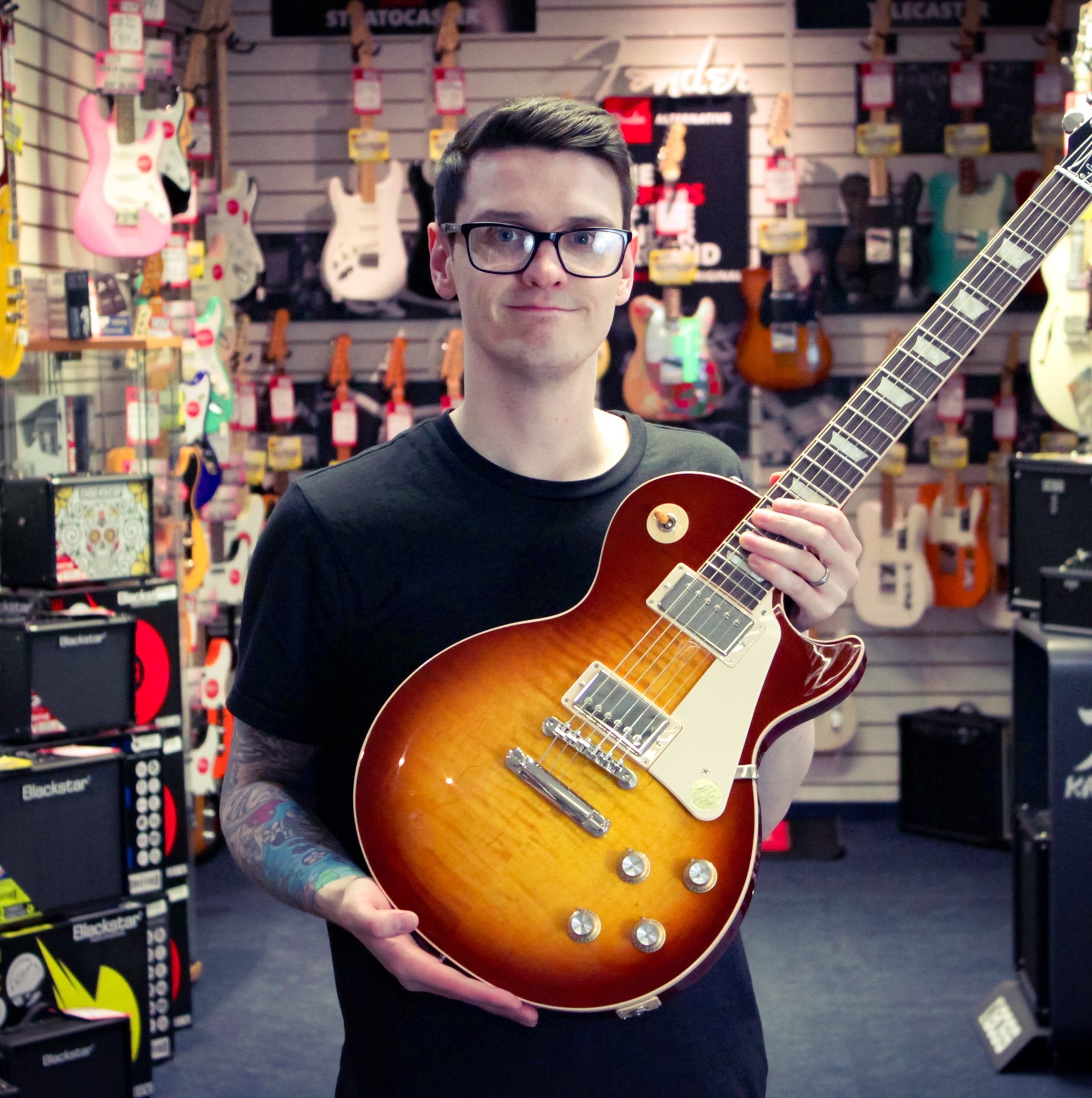
I'm a Senior Deals Writer at MusicRadar, and I'm responsible for writing and maintaining buyer's guides on the site - but that's not all I do. As part of my role, I also scour the internet for the best deals I can find on gear and get hands-on with the products for reviews. My gear reviews have been published in prominent publications, including Total Guitar and Future Music magazine, as well as Guitar World.com. I've also had the privilege of interviewing everyone from Slash to Yungblud, as well as members of Sum 41, Foo Fighters, The Offspring, Fever 333 and many more.
I have a massive passion for anything that makes a sound, particularly guitars, pianos, and recording equipment. In a previous life, I worked in music retail, giving advice on all aspects of music creation and selling everything from digital pianos to electric guitars, entire PA systems, and ukuleles. I'm also a fully qualified sound engineer who holds a first-class Bachelor's degree in Creative Sound Production from the University of Abertay and I have plenty of experience working in various venues around Scotland.
MusicRadar deals of the week: Score an impressive £150 off PRS guitars and £180 off Blackstar amps, as well as sizable discounts on a host of keyboards and pianos
“For those who think they know Joel’s story, as well as those who are not as familiar, I believe this two-part film is both a revelation and a surprise”: New Billy Joel doc is on the way
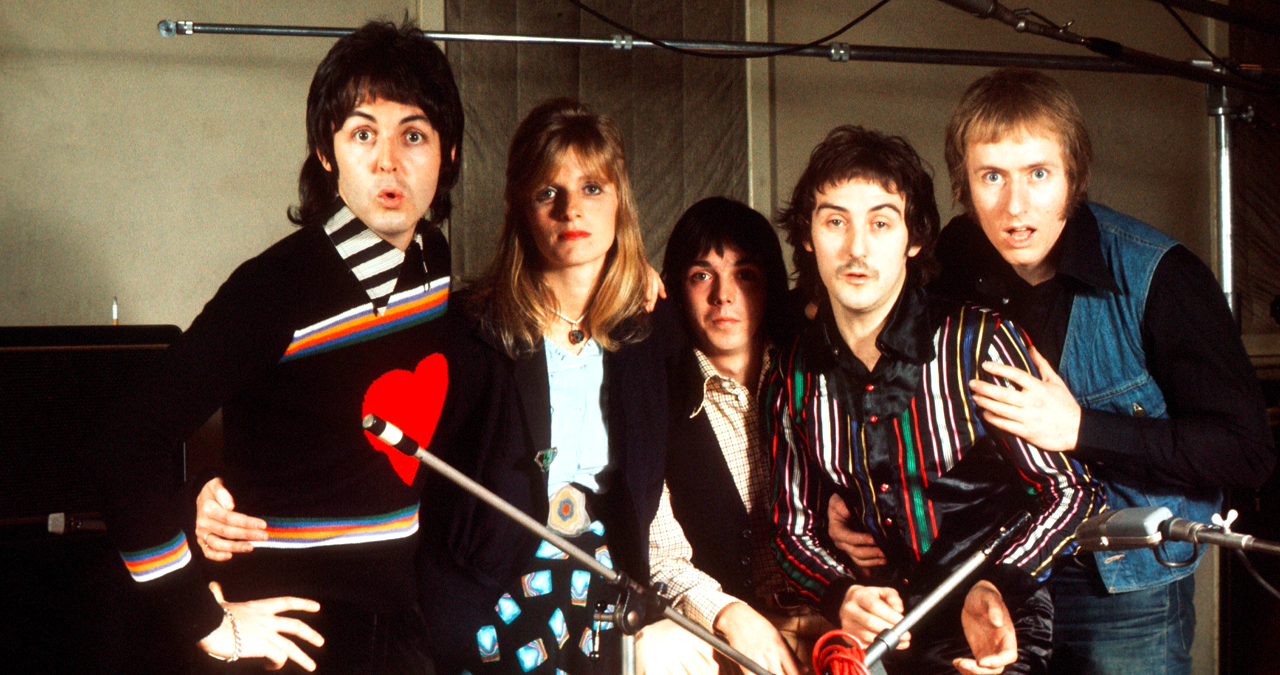

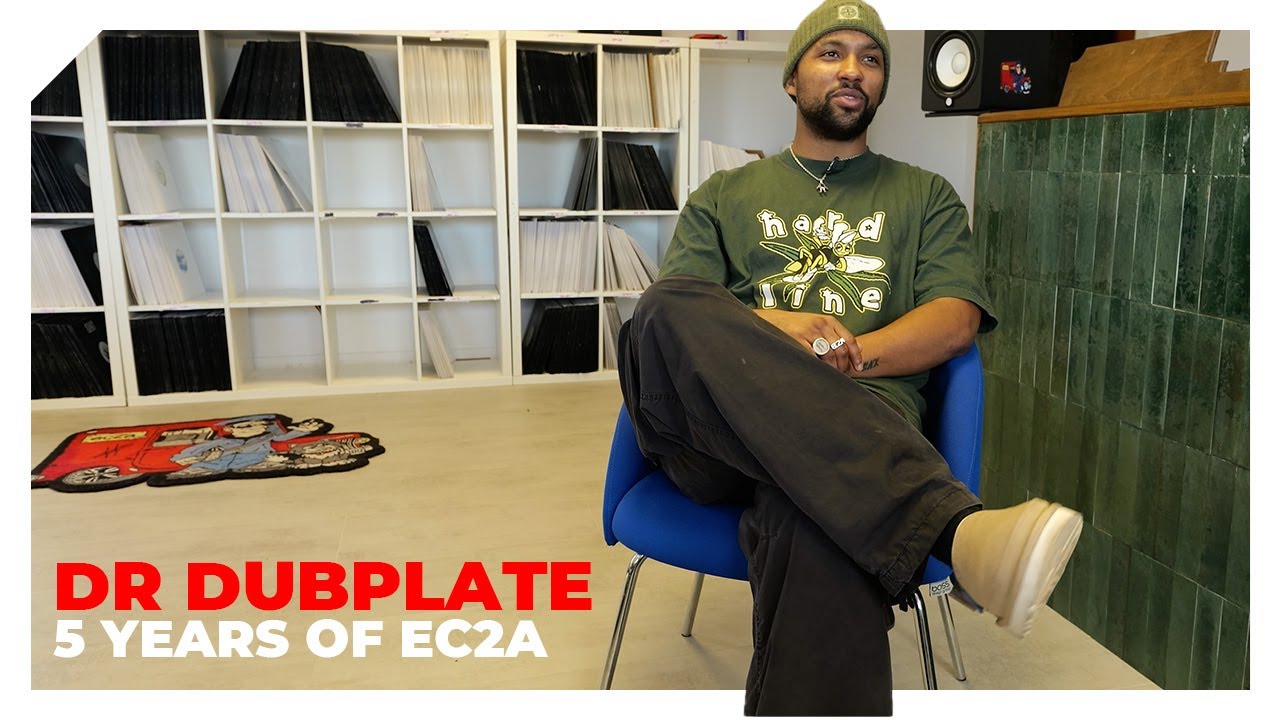


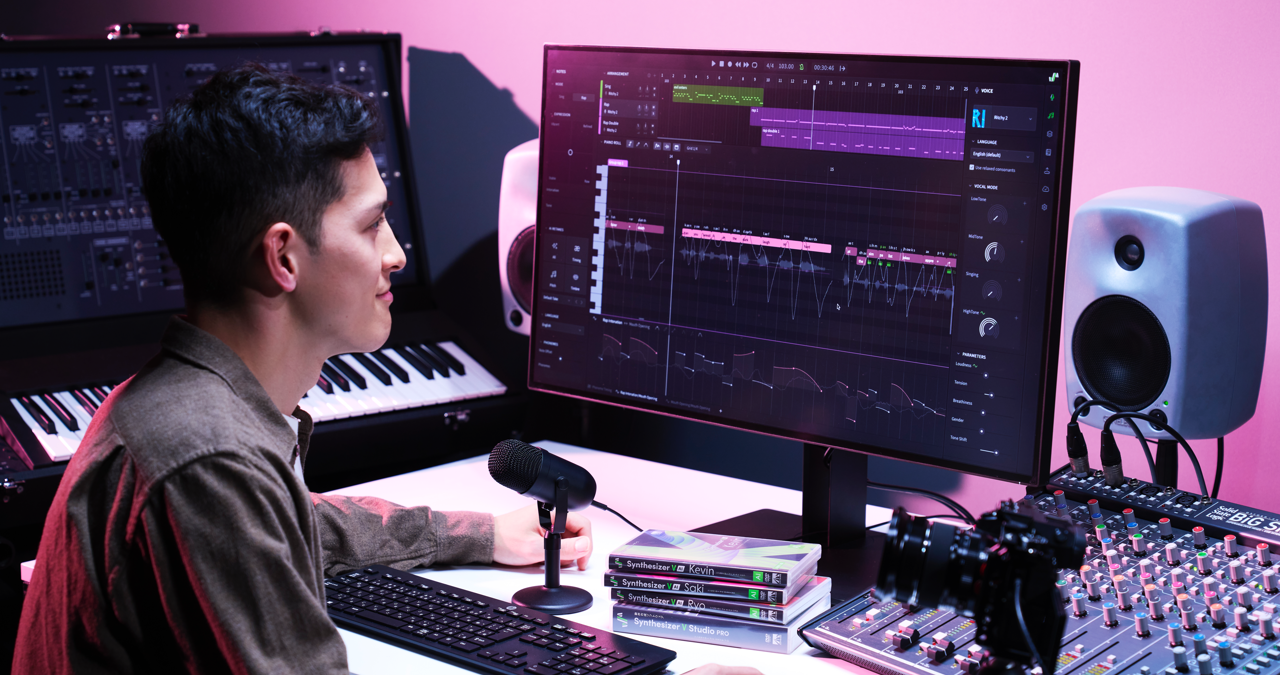

![James Hetfield [left] and Kirk Hammett harmonise solos as they perform live with Metallica in 1988. Hammett plays a Jackson Rhodes, Hetfield has his trusty white Explorer.](https://cdn.mos.cms.futurecdn.net/mpZgd7e7YSCLwb7LuqPpbi.jpg)
